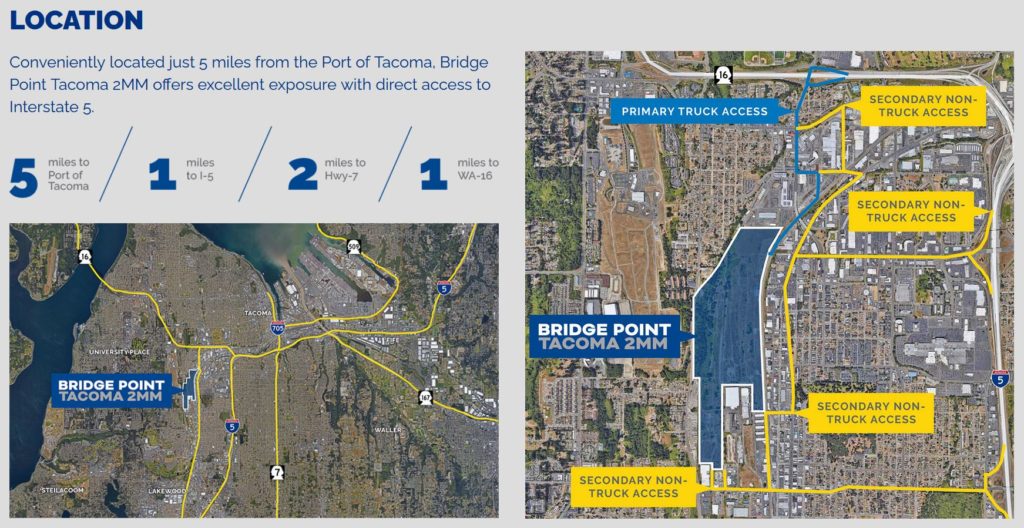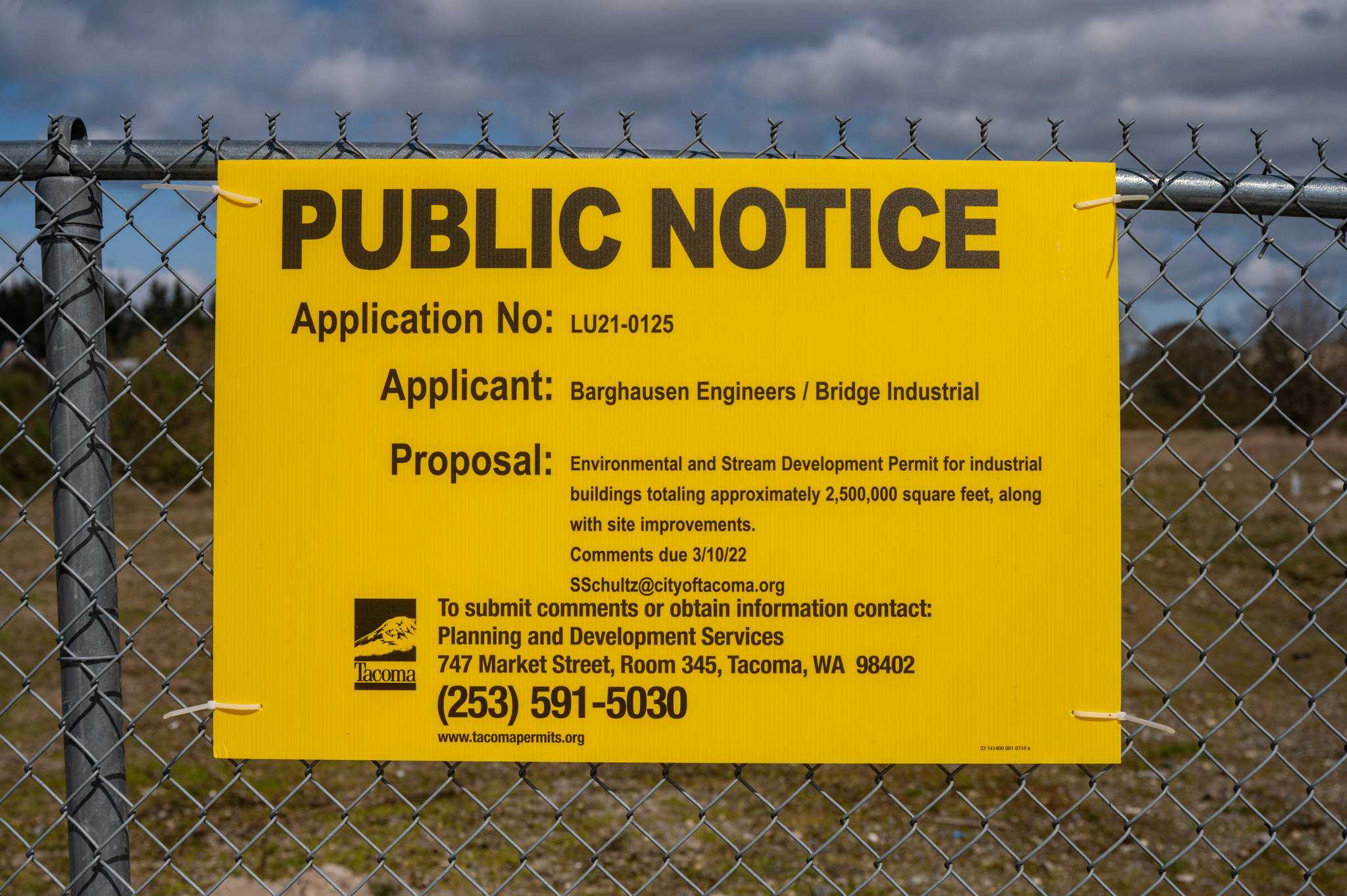by Michelle Mood
11,453 to 12,088 NEW VEHICLE TRIPS on I-5 and WA-16?!
What kind of warehouse is under review for permitting in South Tacoma today? Bridge Industrial is planning to build four warehouses with a combined size of 2.5 million square feet on the old BNSF railroad land they bought last fall. For comparison, such a warehouse is about three times the size of the New York JFK Amazon fulfillment center warehouse recently in the news for unionizing (that one is only 855,000 sq. ft).
Is this for storage? For e-commerce distribution? Well, the application doesn’t say exactly. But Bridge Industrial has been marketing the facility to e-commerce suppliers and has received expressions of interest from e-commerce tenants. EarthJustice took a look at the application materials Bridge Industrial submitted for permitting and has a persuasive argument for this being an e-commerce facility.
EarthJustice calculates that, “applying the daily trip rates for fulfillment centers and parcel hub warehouses, the traffic study would have estimated that the project would produce 11,453 additional vehicle trips each weekday if the site is used as a distribution center (or “parcel hub”), or 12,088 additional vehicle trips each weekday if the site is used as a fulfillment center” instead of the 5,000 or so in the permit documents.
11,453 to 12,088 NEW VEHICLE TRIPS on I-5 and WA-16. And through South Tacoma neighborhoods.

Why does EarthJustice think it might be such high-volume e-commerce structure? For one thing, only such facilities are in the massive 1 million square foot range and higher. These are called “high cube warehouses” due to their corresponding shape.
What does it matter what it’s called? It matters because Bridge Industrial’s permit application calculated the impact on local and regional traffic based on the project being in the “industrial park” category. An industrial park! What’s that? Well, according to the Institutions for Transportation Engineers (ITE), which puts out the manual with the estimates of traffic impact, an industrial park “contains a number of industrial or related facilities … characterized by a mix of manufacturing, service, and warehouse facilities.”
Here’s a map of Bridge Industrial’s proposed construction. It is four ginormous buildings, plus about 20 acres (acres!) of truck courts and parking spaces for 1,436 vehicles. That’s it. There is no mix of manufacturing, service and warehouse facilities. I mean, do YOU see any?!

So what are the implications? The EarthJustice comment on the proposal looks at what the ITE manual expects for traffic from a “high-cube parcel hub warehouse” or “high-cube fulfilment center warehouse,” instead of an industrial park and discovered the traffic impact would be at least double the permit’s prediction!
Meanwhile, Bridge Industrial’s permit actually dares to assert its 5,000 vehicle-trip estimates may overestimate its new traffic impacts – because, it says, “industrial parks” get so much more traffic than a “traditional” warehouse …. Such as it says it is building.
Traditional warehouse? Bridge Industrial is claiming it’s building a traditional warehouse? You know, the kind of warehouse that stores stuff? What traditional warehouse complex has four warehouses of a combined 2.5 million square feet? EarthJustice took a look at “traditional warehouses” in the manual and discovered that Bridge Industrial’s planned facility is more than 5 times as large as the largest traditional warehousing facility, and almost 20 times as large as the smallest!
Far more likely, then, that Tacoma is going to be saddled with four super-enormous e-commerce fulfillment centers. This conclusion is supported by all those parking spaces – Bridge Industrial’s construction will have 1,436 parking spaces—parking nearly 30 times as many employees as the largest “traditional warehouse facility,” which had only 51 employees.
Well, that may indeed explain why Bridge Industrial paid more than $1 million per acre for this land. It’s jumping on the warehouse bandwagon. But as one astute citizen noted in the City’s Public Information Meeting, these massive warehouses have the feel all of those overbuilt structures of the past – remember when strip malls were all the rage? Walking malls? Movie theaters? All empty husks now. The building wave very well could leave Tacoma’s mega-warehouse just as washed up and stranded on the shore as all those other white elephants.

